Deco M5 Whole Home Mesh WiFi System Subscribe! http://bit.ly/SubTechofTomorrow Deco M5 Whole Home Mesh WiFi System 3 Pack
http://amzn.to/2yHikof Deco M5 1-Pack Whole Home Mesh WiFi System
http://amzn.to/2yHiRqf Try Amazon Prime FREE for 30 Days & Support Tech of Tomorrow! http://amzn.to/12JFYau Don't forget to check out the website!
http://www.techoftomorrow.com Check us out on Facebook!
http://www.facebook.com/TechofTomorrow Stay updated on Twitter!
http://www.twitter.com/techof_tomorrow Tech of Tomorrow Music!
http://www.techoftomorrow.com/music The Benchmark Song: The Human Zoo
– Free on Spotify! http://spoti.fi/10Vz31z
– Amazon: http://amzn.to/12Rh6kI
– iTunes: http://bit.ly/199301I
Categoria: HardwareSoftware
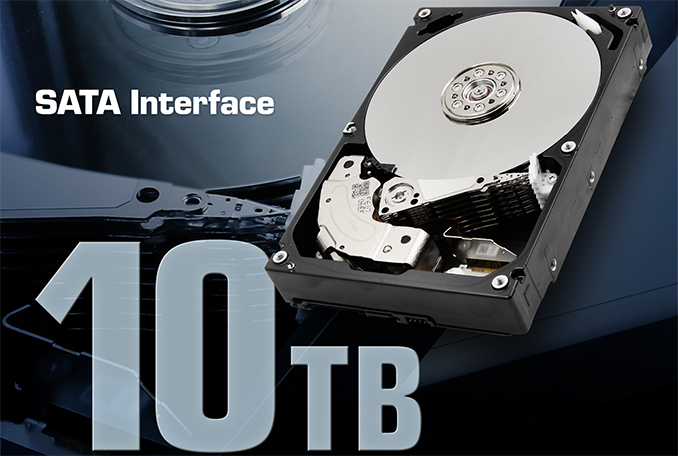
Toshiba has announced its new enterprise-grade MG06ACA-series hard drive with a 7200 RPM spindle speed and up to 10 TB capacity. The new units have a new design as well as up to seven platters. Performance and reliability ratings of the MG06ACA-series drives are on par with other enterprise-class HDDs. In addition to the 10 TB model, Toshiba also has a 6 TB and an 8 TB model in the MG06ACA lineup.
Toshiba’s 10 TB hard drive is based on the company’s new platform featuring up to seven PMR platters along with a 7200 RPM spindle speed and the company’s persistent write cache. Toshiba’s PWC with power loss protection (PLP) stores data that is not yet written to the HDD media. Previously such feature was only found on enterprise-grade 10K and 15K hard drives to improve reliability, but Toshiba is installing it on nearline drives as well. There are several circumstances when the PWC with PLP can be useful. First, when the HDD write cache contains data not yet written to media and a power loss happens, the data is automatically moved to non-volatile memory (the drive collects energy from the spinning media). Second, when a drive with 4K sectors emulates 512B sectors, it has to perform the read-modify-write (RMW) operation to align the source write request with the physical sectors it has to modify and thus uses write cache. This slightly reduces system performance because it requires an extra spin of a disk (or more) and if a power loss occurs, a significant amount of data may get lost. Clearly, if a power loss takes place before the data is transferred to the PWC, it is gone anyway. Speaking of reliability in general, Toshiba rates the MG06ACA HDDs for 550 TB annual workload as well as for 2.5 million hours MTBF rating.
Toshiba does not say whether its 10 TB HDD uses helium, but based on power consumption (up to 10 W) and images of a disassembled drive that lacks hermetic capsule (that has a very distinctive look), the manufacturer has managed to squeeze in seven platters into a drive without using helium. Such move makes production of the drives a bit easier, but at the cost of slightly higher power consumption and a bit lower performance. Keep in mind that the persistent write cache also consumes power and therefore increased power consumption may also be a result of higher reliability.
| Brief Specifications of Toshiba’s MG06ACA HDDs | ||||||
| Capacity | 10 TB | 8 TB | 6 TB | |||
| P/N | 4K Native | MG06ACA10TA | MG06ACA800A | MG06ACA600A | ||
| 512e | MG06ACA10TE | MG06ACA800E | MG06ACA600E | |||
| 512e SIE | MG06ACA10TEY | MG06ACA800EY | MG06ACA600EY | |||
| RPM | 7200 RPM | |||||
| Interface | SATA 6 Gbps | |||||
| DRAM Cache | 256 MB | |||||
| Persistent Write Cache | Yes | |||||
| Helium-Filling | Unknown, likely not | |||||
| Data Transfer Rate (host to/from drive) | 237 MB/s | 230 MB/s | ||||
| MTBF | 2.5 million | |||||
| Rated Annual Workload | 550 TB | |||||
| Acoustics (Seek) | 34 dBA | |||||
| Power Consumption | Random read/write | 10 W | 9.1 W | 8.3 W | ||
| Idle | 7.3 W | 6.4 W | 5.6 W | |||
| Warranty | 5 Years | |||||
When it comes to performance, the 10 TB MG06ACA HDD is a tad slower than competing HDDs featuring helium inside — it is speced for 237 MB/s sequential data transfer rate, which is slightly lower compared to around 250 MB/s offered by some rivals. If the drive is not helium-based, this slightly lower performance is explainable — it is harder for arms and heads to move in air environment (which has 7x higher density than helium), so “air” drives are a bit slower than helium-filled HDDs. On the other hand, the 6 TB and the 8 TB MG06ACA-series hard drives are speced for 230 MB/s sequential data transfer rate, which is a bit faster than competing HDDs of the same capacity. Unfortunately, Toshiba does not disclose which platters it uses for the lower-capacity MG06ACA drives.
At present, Toshiba offers its MG06ACA drives with the SATA interface. In addition to regular HDDs with 4K native sectors, there are versions with 512e sectors as well as flavors with Sanitize Instant Erase (SIE) feature.
Related Reading:
- Seagate Announces Enterprise Capacity 12 TB HDD: 2nd-Gen Helium-Filled Hard Drives
- Seagate Confirms Plans for 12 TB HDD in Near Future, 16 TB HDD Due in 2018
- Western Digital Ships 12 TB WD Gold HDD: 8 Platters and Helium
- Western Digital: Sales of Helium-Filled HDDs Accelerating, 15M Sold So Far
- Western Digital Starts Shipments of HGST Ultrastar He12 12 TB HDDs
- Toshiba’s 8 TB X300 HDD Now Available: 7200 RPM Drive For Under $ 260
- Toshiba Launches N300 HDDs for NAS: Up to 8 TB, Up to 240 MB/s
Autore: Anton Shilov AnandTech
Dopo il Cosmos 25th Anniversary Edition, Cooler Master ha presentato un nuovo “gigante” nel mondo dei case, il Cosmos C700P. Questo bestione con dimensioni di 639 x 306 x 651 mm per un peso di 26,2 chilogrammi può ospitare anche le configurazioni più ingombranti all’interno del suo telaio fatto in acciaio, insieme ad altri materiali come l’alluminio e la plastica, che si uniscono al vetro temperato con bordature ricurve sulla paratia laterale lato componenti. È comunque possibile acquistare un altro pannello in vetro temperato per l’altro lato.

Il case offre otto slot di espansione e nella configurazione standard vi sono due slot da 2,5″, altrettanti da 3,5″/2,5″ e un alloggiamento da 5,25″, ma è possibile ampliare questa dotazione. C’è chiaramente ampio spazio per sistemi di raffreddamento, sia ad aria che a liquido. Si possono montare tre ventole frontali da 120/140mm, altrettante nella parte superiore, due sul fondo e una posteriormente. Inoltre, a seconda della posizione, si possono installare radiatori fino a 420 mm.

Chi volesse raffreddare la CPU ad aria può usare dissipatori con un’altezza fino a 198 mm, mentre sono supportate schede video fino a 320 mm – 490 mm senza gabbia per gli hard disk. L’alimentatore si monta sul fondo, mentre esternamente abbiamo una USB 3.1 Gen 2 Type C, quattro USB 3.0, tasti di controllo per ventole e illuminazione RGB (integrata nella parte alta e bassa).


Tra le altre peculiarità troviamo il vassoio della scheda madre rimovibile e rotante di 90 gradi che permette quindi di “creare un effetto camino”, posizionando la scheda video in verticale per ottimizzare il flusso d’aria all’interno del case, consentendo all’aria calda di spostarsi verso l’alto con minori interferenze e uscire dall’alto.
Il vassoio può anche essere posizionato sul lato opposto per creare un layout inverso. Infine, è possibile rimuoverlo, creando lo spazio sufficiente per installare l’hardware su una superficie piana prima di posizionarla all’interno del case. Tra i marchi di fabbrica troviamo infine le barre in alluminio sulla parte superiore e inferiore. Il prezzo al pubblico consigliato è pari a 334 euro IVA inclusa.
Autore: Manolo De Agostini Tom’s Hardware
Recognizable Cosmos design with MasterConcept elements
Cooler Master has officially launched the new Cosmos C700P PC case that was showcased back at the Computex 2017 show and which features premium materials, recognizable design and some new features that come from the MasterConcept design.
Measuring 639x306x651mm and weighing in at 26.2kg, the Cooler Master Cosmos C700P is a big case made of aluminum, steel, and plastic with tempered glass side panel. Due to its big size, it does not come as a surprise that it supports Mini-ITX, Micro-ATX, ATX, E-ATX motherboards, comes with eight expansion slots, plenty of room for air and liquid cooling, plenty of drive bays, and support for up to 198mm tall CPU coolers, 320mm long graphics cards (490mm without 3.5-inch HDD cage).
When it comes to design, Cooler Master did not veer off from the recognizable design of the Cosmos series, including the recognizable aluminum handles on the top and aluminum rails at the bottom that lifts it off the ground.
On the other hand, the Cosmos series got modernized with the C700P, including the RGB lighting with full lighting control and sync, modular design which allows users to remove the motherboard tray, PSU, storage and cable management covers and set it up in three different layouts, regular, chimney and invert. The Cosmos C700P also comes with the next-generation frame design which should appeal to case modders. Cooler Master will also offer plenty of accessories for the Cosmos C700P, which will provide even further customization options.
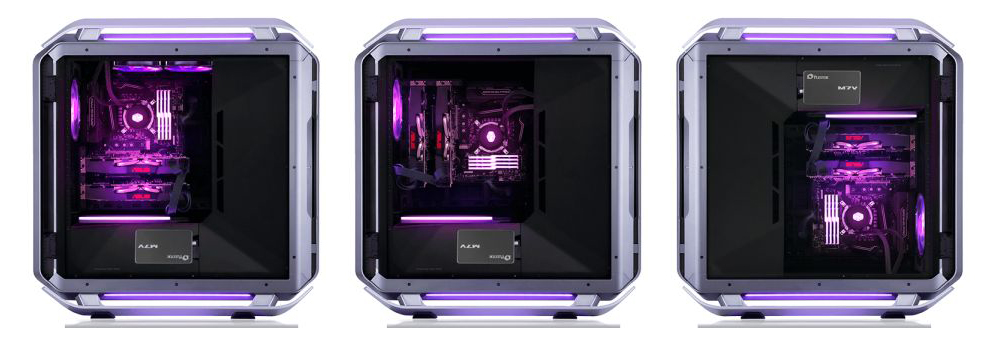
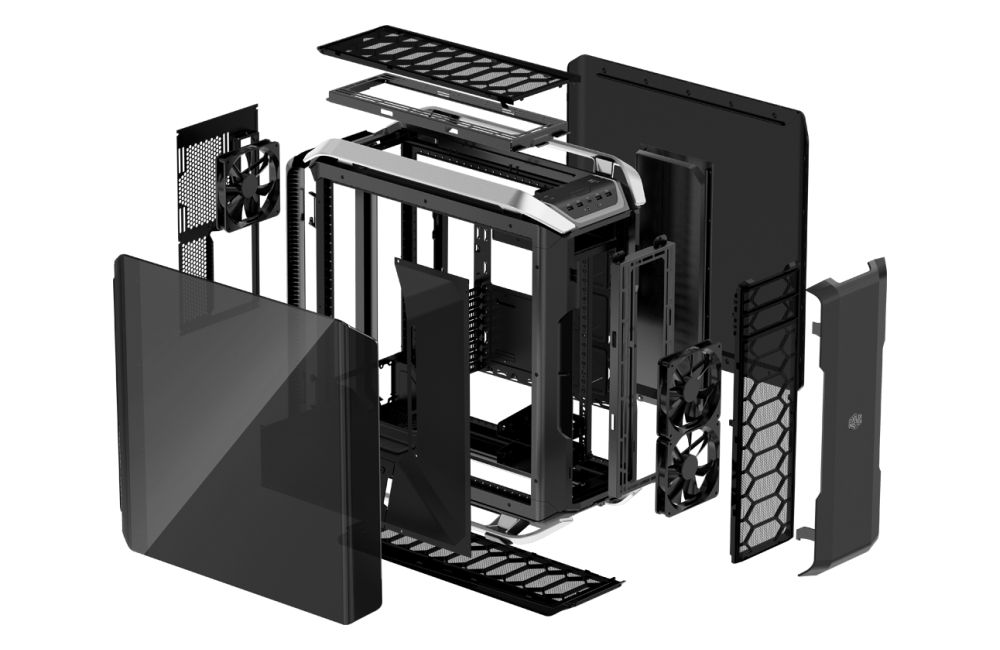
Specification-wise, the Cosmos C700P comes with single 5.25-inch, two 3.5/2.5-inch and two 2.5-inch bays with support for up to two 5.25-inch devices, 8 or 9 3.5/2.5-inch drives (with ODD bay removed) and two dedicated 2.5-inch drives. The front I/O panel features fan speed and RGB control buttons, audio ports and four USB 3.0 ports.
When it comes to cooling, it comes with support for up to three 140/120mm fans at the top, two 140/120mm fans at the bottom, three 140/120mm fans at the front (two 140mm pre-installed) and one 140/120mm at the rear (one 140mm pre-installed). Same goes for liquid cooling with support for up to 360mm radiator at the top, 240mm one at the bottom, 420mm one at the front and 140mm radiator at the rear.
According to Cooler Master, the Cosmos C700P is expected to be available in Europe middle of October with a suggested retail price of €299.99.
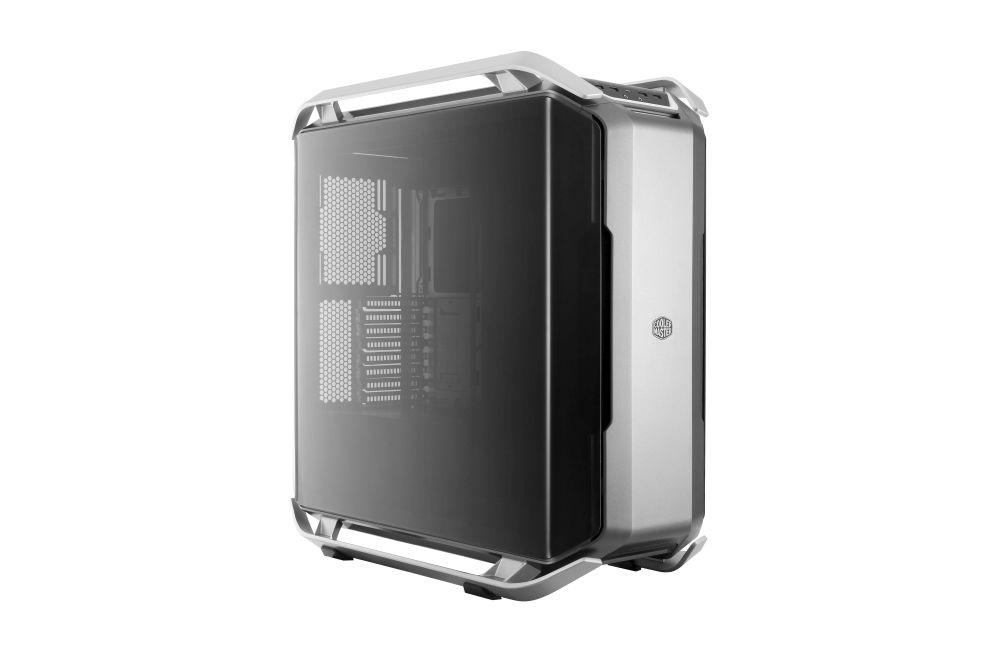
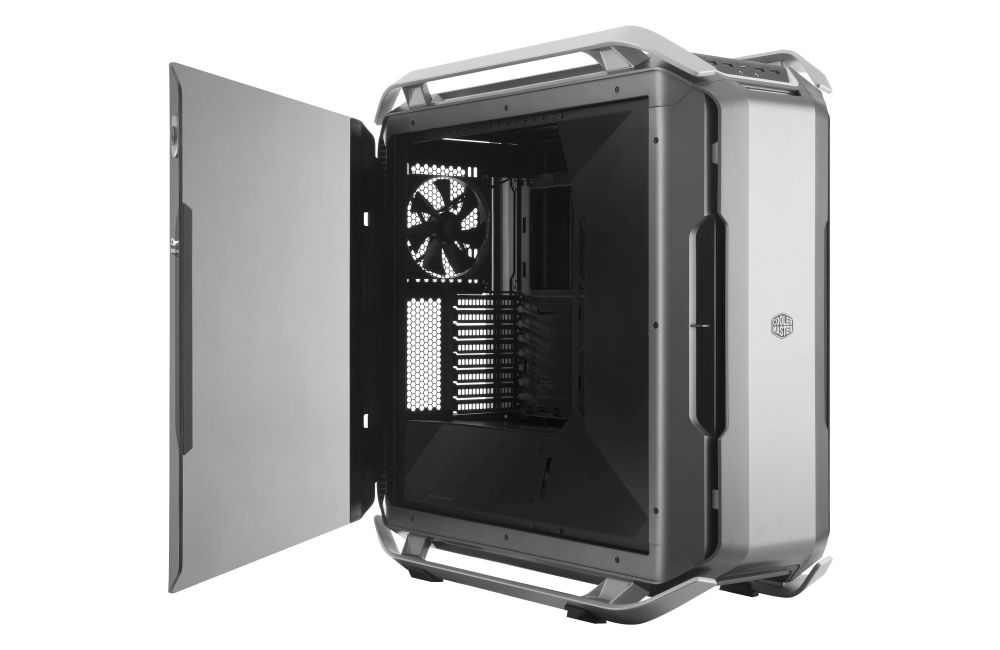

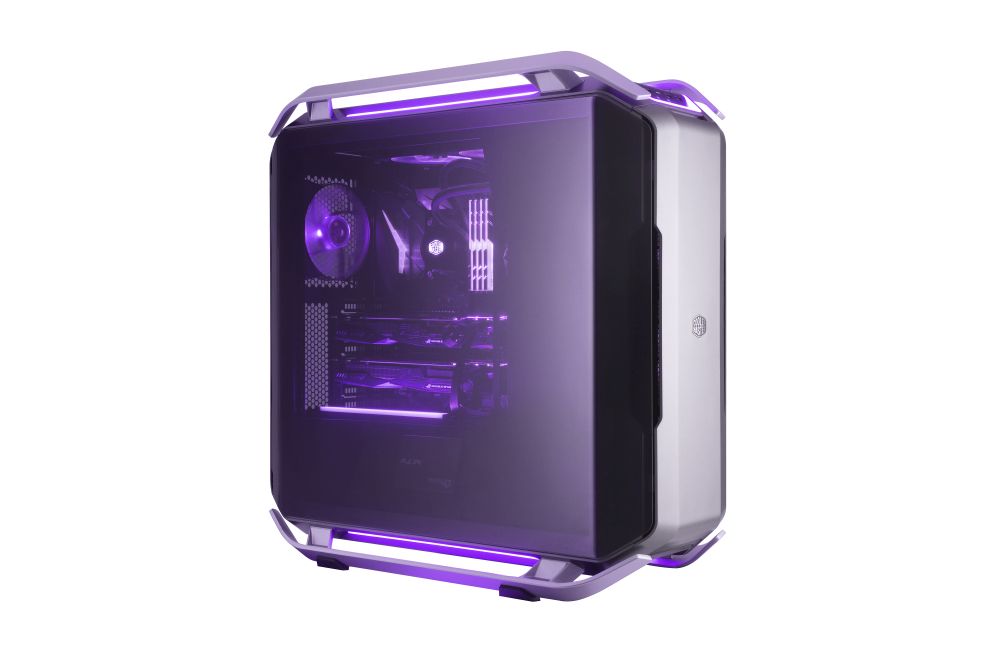
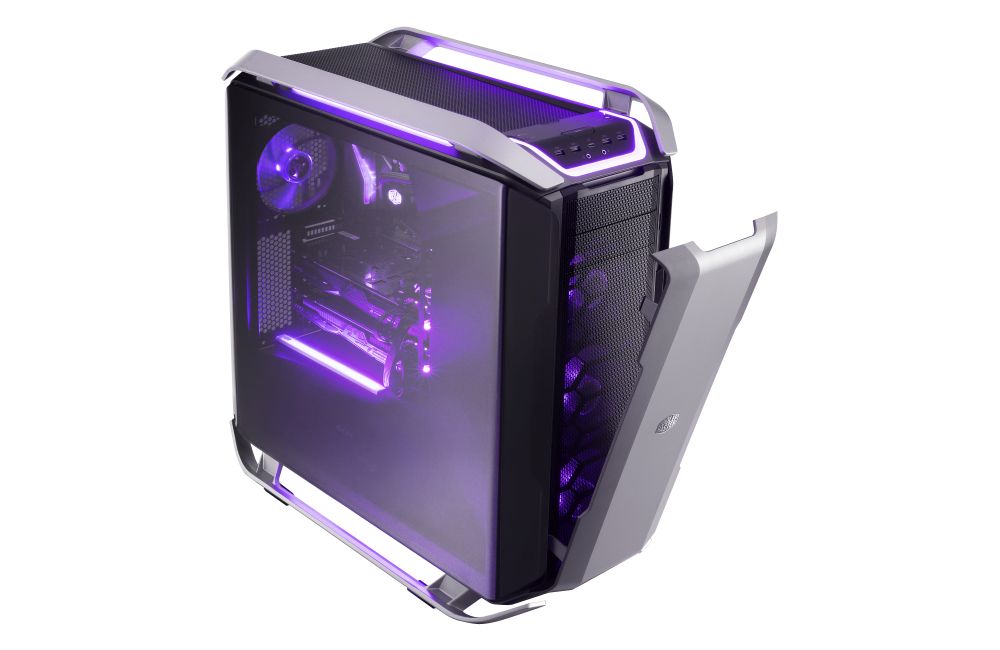
Autore: bobo [AT] fudzilla [DOT] com (Slobodan Simic) Fudzilla.com – Home


Google avvia una campagna per promuovere il suo browser Chrome spiegando come cambiare browser predefinito in Windows 10.
Google ha appena avviato una campagna per promuovere ulteriormente l’utilizzo del suo browser web (che già è il più usato al mondo con il 54,9% delle quote di mercato seguito da Internet Explorer con il 15,6% e da Firefox con il 12,3%; fonte NetMarketShare).
Eseguendo Chrome su un sistema ove non è configurato come browser predefinito, il programma mostrerà una schermata introduttiva che illustra come cambiare il browser predefinito in Windows 10.
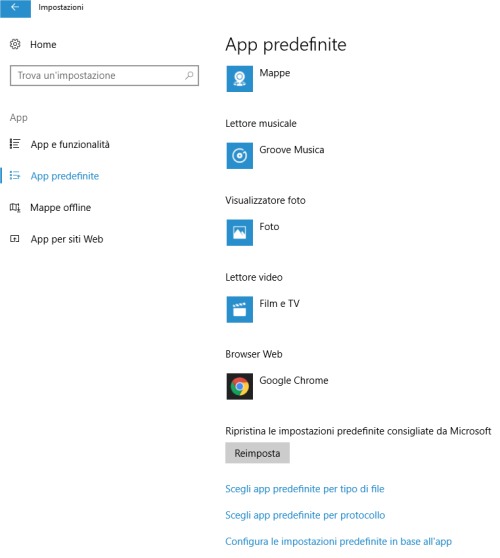
Già diversi sviluppatori avevano contestato la nuova modalità per l’impostazione del browser predefinito in Windows 10, da molti considerata troppo cervellotica (ne abbiamo parlato nell’articolo Programmi predefiniti in Windows 10 per aprire file: come fare variazioni).
Adesso Chrome visualizza la procedura passo-passo per cambiare il browser predefinito in Windows.
Curiosamente Chrome mostra un’immagine nella quale, come browser predefinito, spicca il nome di Edge. Questo perché il browser di default di Windows è proprio Edge (risulta preinstallato e configurato come tale) ma la procedura è evidentemente la stessa per qualunque altro browser.Per cambiare browser predefinito in Windows 10, si deve procedere come segue:
1) Digitare Impostazioni delle app predefinite nella casella di ricerca di Windows 10 oppure premere Windows+I, cliccare su App e scegliere App predefinite.
2) Cliccare su Edge o sul nome di qualunque altro browser in corrispondenza della voce Browser web e scegliere il software che si desidera usare di default.
3) Per fissare l’icona di Chrome nella barra delle applicazioni di Windows 10 è poi sufficiente avviare il browser, cliccare con il tasto destro sulla sua icona tra le applicazioni in esecuzione e scegliere Aggiungi alla barra delle applicazioni.
È interessante ricordare che Chrome permette di usare come normali programmi desktop tutte le varie applicazioni web. Come spiegato nell’articolo Come trasformare applicazioni web in programmi desktop, si possono aprire dalla barra delle applicazioni di Windows applicazioni web come WhatsApp, Telegram, Skype, Gmail e così via.
Autore: IlSoftware.it
